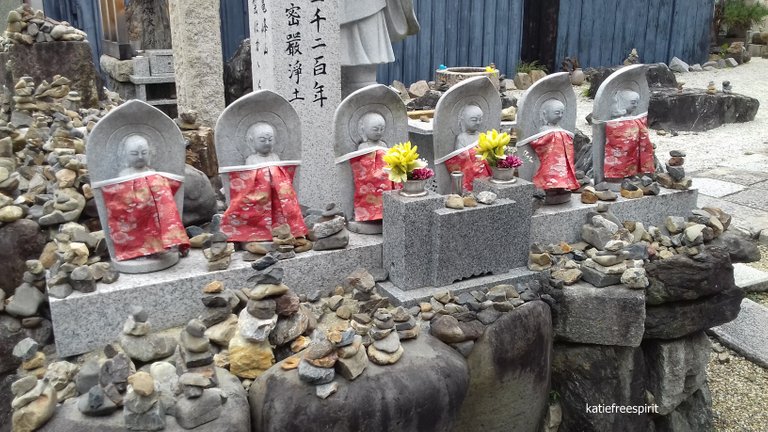
The Kihou-zan heijouin temple is a small Buddhist temple that I noticed on my way to a bamboo forest in Kyoto. The statues of a pilgrim caught my attention, as well as small figurines of Buddhist deities partially covered with nice material and a lot of piles of stones stacked on each other. This temple of the Daikakuji school of the Shingon sect is located near Saga-Arashiyama station.
Świątynia Kihou-zan heijouin jest małą, buddyjską świątynią, którą zauważyłam w drodze do lasu bambusowego w Kioto. Moją uwagę zwróciły posągi - pielgrzyma, a także małe figurski buddyjskich bóstw zakryte częściowo ładnym materiałem i mnóstwo ułożonych na sobie stosów kamyków. To świątynia szkoły Daikakuji sekty Shingon, znajduje się w pobliżu stacji Saga-Arashiyama.
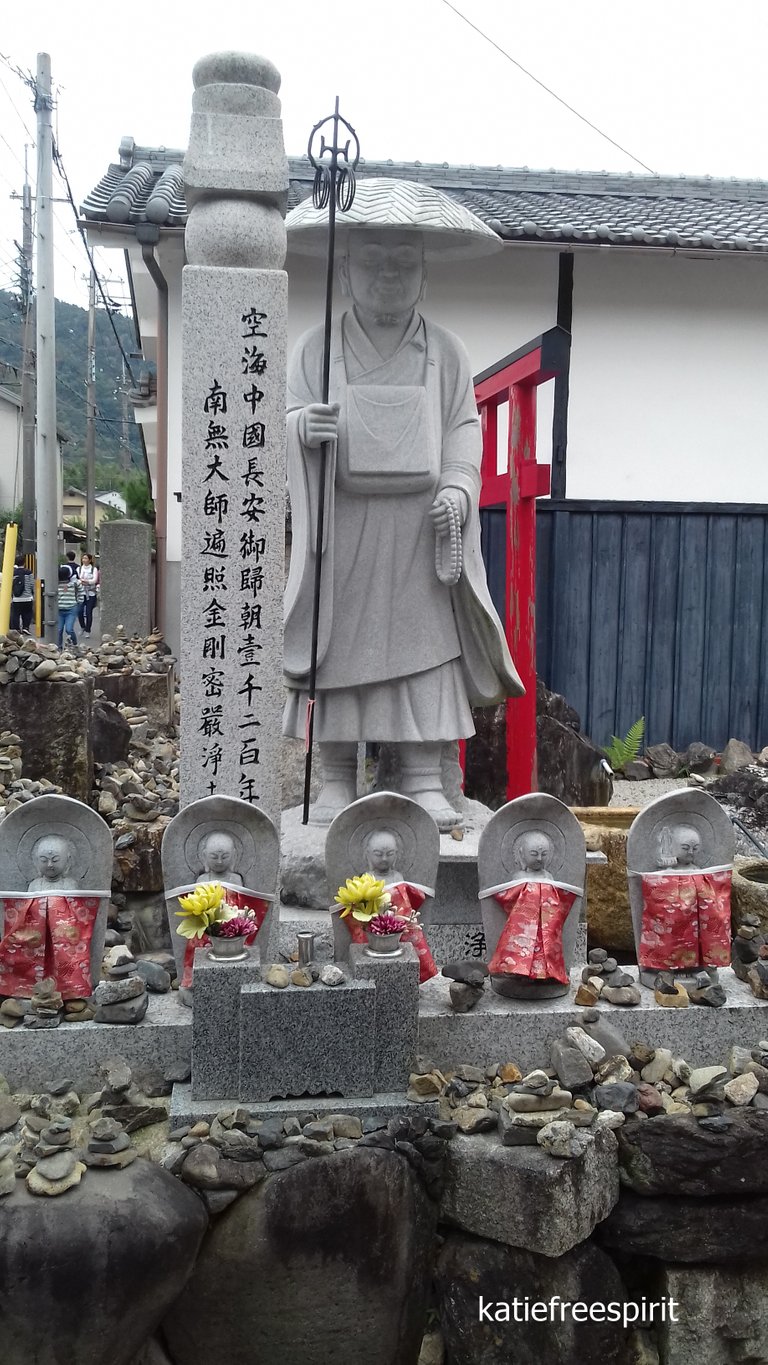
Unfortunately, due to the fact that this temple is small and relatively young, there was almost no information on the internet about it, and I would love to learn more about the monuments I saw there. Whenever I write articles on Hive about places I've been, I like to broaden my knowledge and read a lot about them. This time I feel frustrated because despite knowing the name of this place, practically nothing can be found. Fortunately, a Japanese friend helped me a lot. She recognized the person on the monument above, who I mistakenly recognized as a pilgrim. It turns out to be a Kūkai monument.
It's born 774, d. 835 - Japanese monk, scholar, poet, and artist, founder of the Buddhist shingon sect (Shingon-shū; Sect of the True Word). He is also known by his posthumous name Kōbō-Daishi (Japanese 弘法 大師 great master spreading Buddhist teachings), given to him by the imperial court in 921.
In 804, Kūkai traveled to China, where he studied with Huiguo, a teacher of esoteric Buddhism, who in turn was a direct student of the Indian master. During his stay in the Middle Kingdom, he also learned Chinese calligraphy and poetry, studying with the best masters of the time. Kūkai returned to Japan in 806.
In 816, he was granted land on Mount Kōya by emperor Saga, where he founded one of the two centers of the Shingon school.
Kūkai became famous as a calligrapher and creator of the Japanese kana syllabary used to write phonetic elements of the Japanese language (next to Chinese characters). He was the precursor of male love - shudō. He was also a sculptor, architect, and even an engineer (in 822 he was in charge of the construction of an irrigation reservoir at the behest of the imperial court).
'The Iroha Poem' is dedicated to him.
Source: Wikipedia
Niestety ze względu na to, że ta świątynia jest mała i stosunkowo młoda w internecie nie było prawie żadnych informacji na jej temat, a chętnie dowiedziałabym się więcej o pomnikach, które widziałam obok świątyni. Zawsze jak piszę artykuły na Hive dotyczące miejsc, w których byłam lubię pogłębiać moją wiedzę i sporo czytam na ich temat. Tym razem czuję się sfrustrowana bo mimo znajomości nazwy tego miejsca praktycznie nic się nie da znaleźć. Na szczęście bardzo mi pomogła znajoma Japonka. Rozpoznała osobę z pomnika powyżej, którą błędnie rozpoznałam jako pielgrzyma. Okazuje się, że jest to pomnik Kūkai.
To ur. 774, zm. 835) – japoński mnich, uczony, poeta i artysta, założyciel buddyjskiej sekty shingon (Shingon-shū; Sekta Prawdziwego Słowa). Znany jest również pod pośmiertnym imieniem Kōbō-Daishi (jap. 弘法大師 wielki mistrz rozpowszechniający nauki buddyjskie), nadanym mu przez dwór cesarski w 921 roku.
W 804 roku Kūkai wyruszył do Chin, gdzie pobierał nauki u Huiguo, nauczyciela buddyzmu ezoterycznego, który z kolei był bezpośrednim uczniem indyjskiego mistrza. Podczas swojego pobytu w Państwie Środka poznał także chińską kaligrafię i poezję, ucząc się u najlepszych ówczesnych mistrzów. Do Japonii Kūkai powrócił w 806 roku.
W 816 roku otrzymał z nadania cesarza Saga ziemię na górze Kōya, gdzie założył jeden z dwóch ośrodków szkoły shingon.
Kūkai zasłynął jako kaligraf i twórca sylabariusza japońskiego kana służącego do zapisu elementów fonetycznych języka japońskiego (obok chińskich znaków). Był prekursorem męskiej miłości – shudō. Był również rzeźbiarzem, architektem, a nawet inżynierem (w 822 roku kierował, na polecenie dworu cesarskiego, budową zbiornika irygacyjnego).
Poświęcony jest mu poemat Iroha.
Źródło: Wikipedia
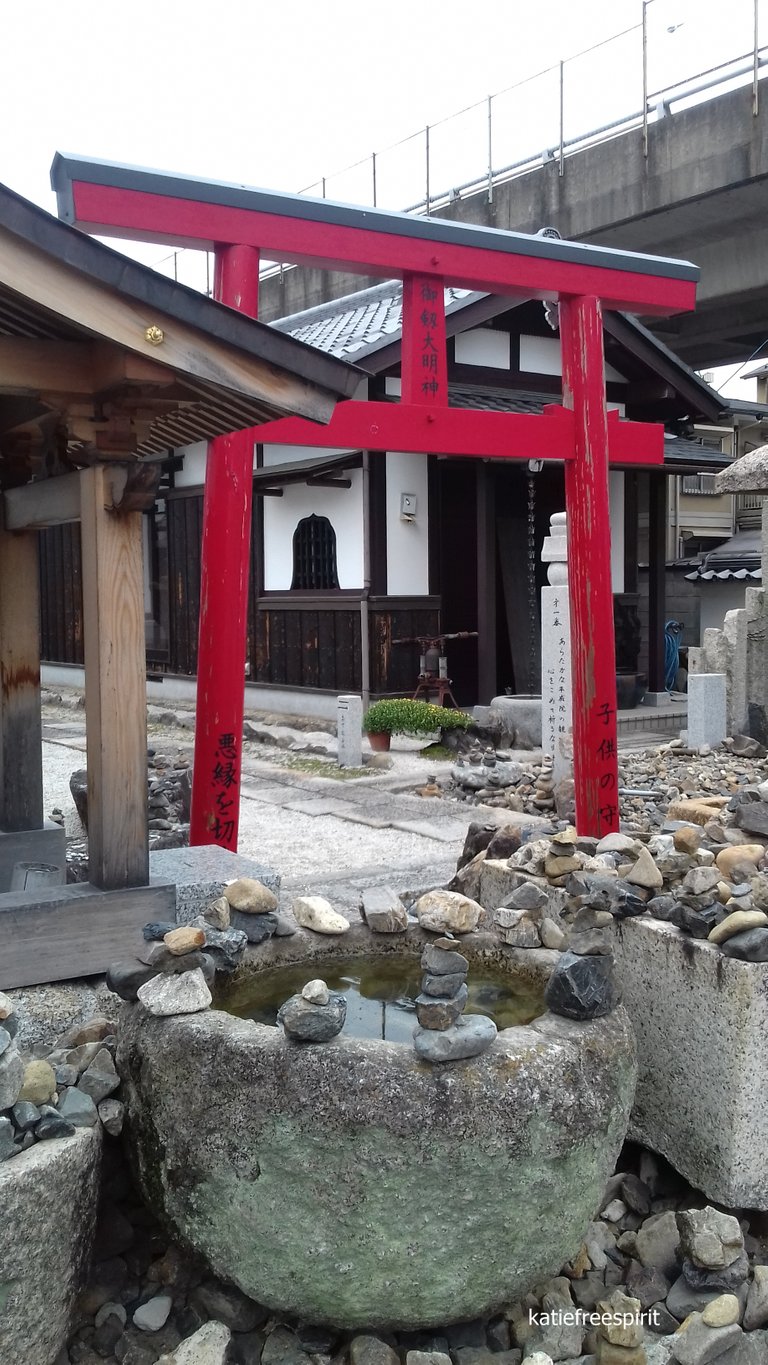
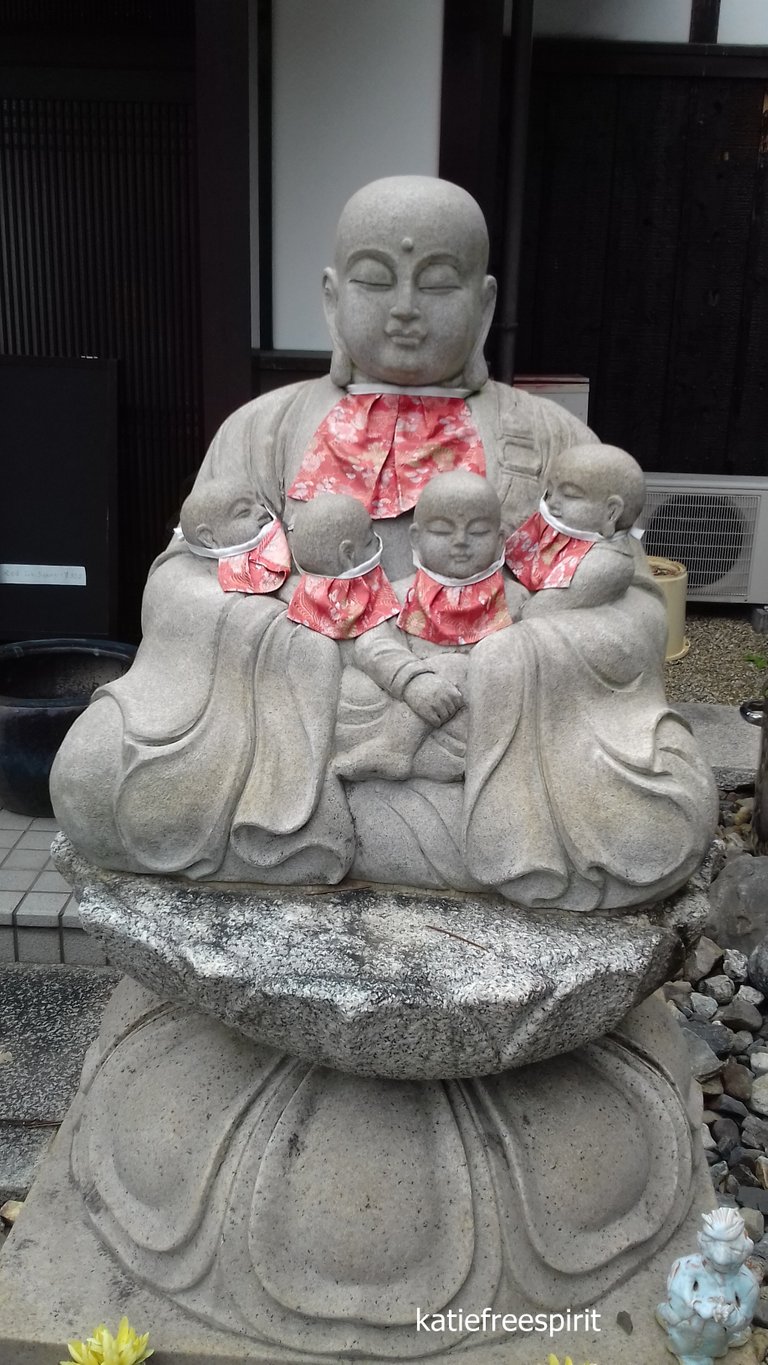
Apart from the monuments, I was interested in large amounts of stones stacked on top of each other. They made piles of stone. I was wondering what they meant. I have read several possible explanations, incl. that they are created by pilgrims visiting the temple as a sign that they have been here, then they come up with a wish which the stones are to help them fulfill. The stones are also designed to bring good luck to the person who puts them and their family.
Oprócz pomników zaciekawiły mnie duże ilości kamieni poukładanych jeden na drugim. Tworzyły kamienne stosy. Zastanawiałam się co oznaczają. Przeczytałam kilka możliwych wyjaśnień, m.in. że tworzą je pielgrzymi odwiedzający świątynię na znak, że tu byli, następnie formułują życzenie, które kamienie mają im pomóc spełnić. Kamienie mają też za zadanie przynieść szczęście osobie, która je układa i jej rodzinie.
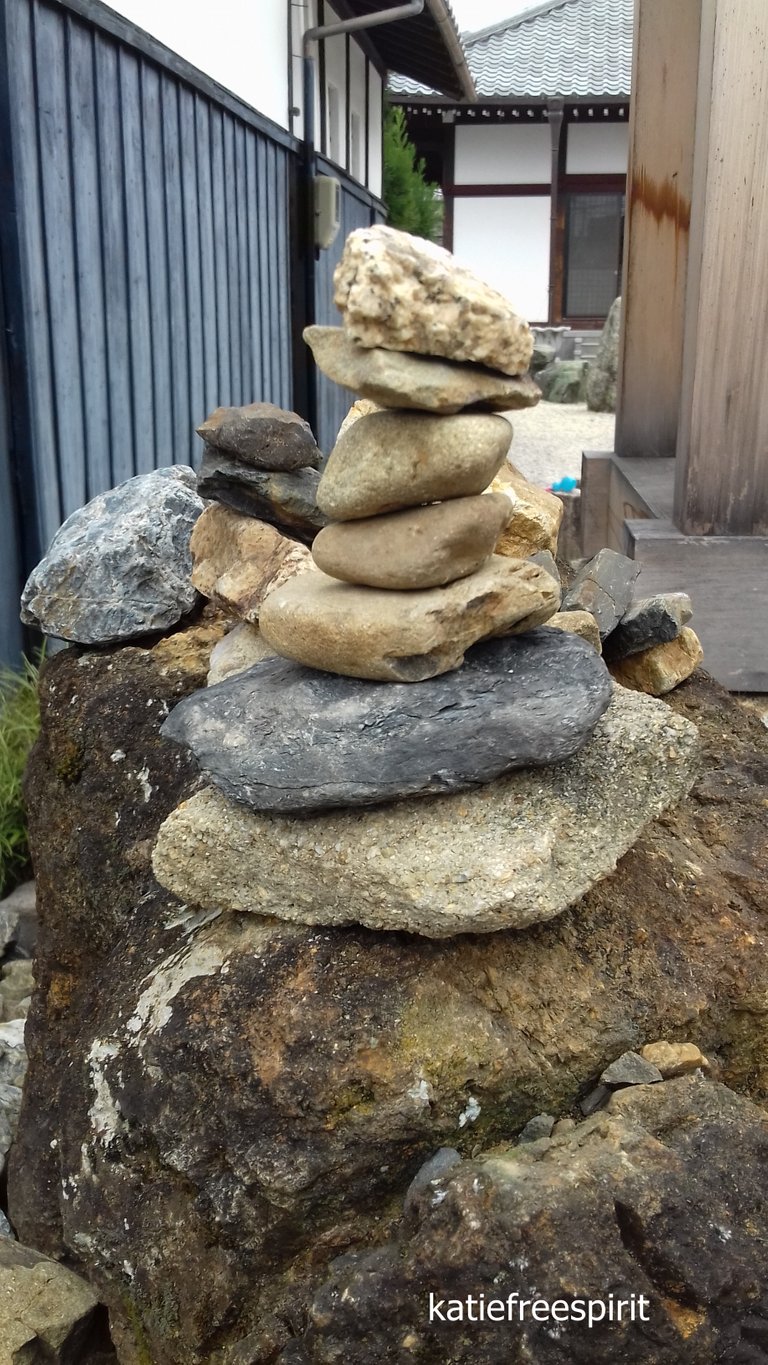
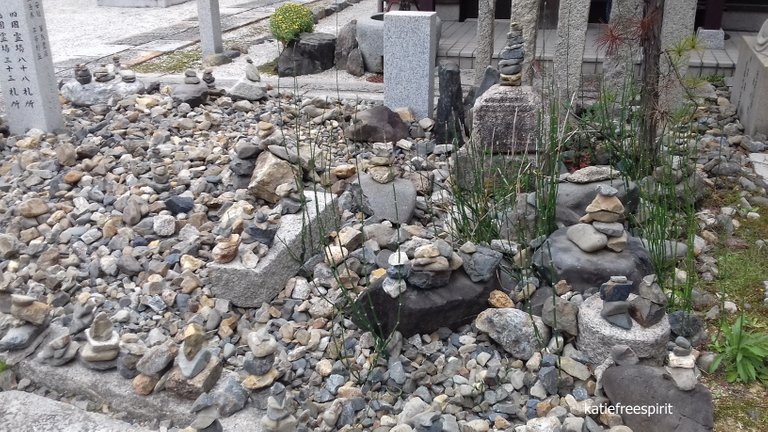
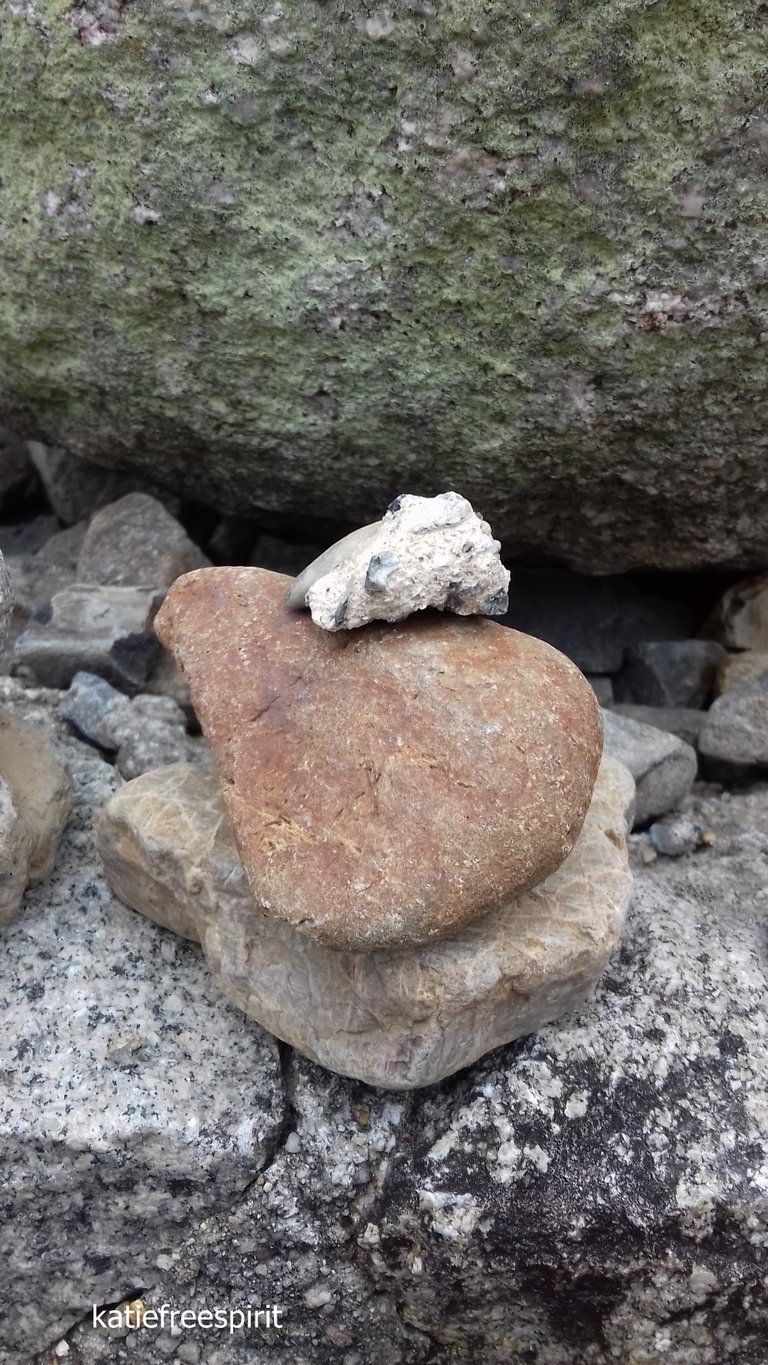
Congratulations, your post has been added to Pinmapple! 🎉🥳🍍
Did you know you have your own profile map?
And every post has their own map too!
Want to have your post on the map too?
Hiya, @lizanomadsoul here, just swinging by to let you know that this post made it into our Honorable Mentions in Daily Travel Digest #1116.
Your post has been manually curated by the @pinmapple team. If you like what we're doing, please drop by to check out all the rest of today's great posts and consider supporting other authors like yourself and us so we can keep the project going!
Become part of our travel community: